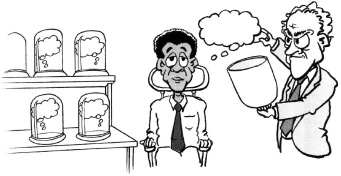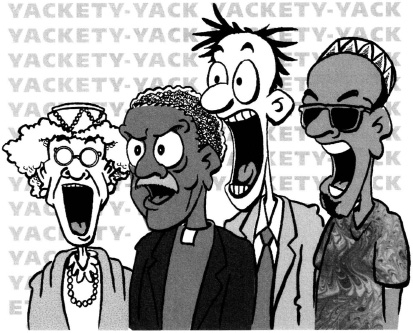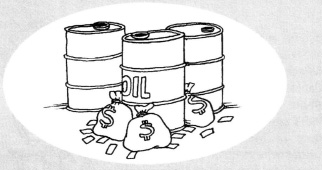Can You Believe What You See and Hear?
In order for democracy to be “democratic,” the media has to fulfill two functions:

Noam Chomsky believes that the media fails miserably on both counts.
In Chomsky’s view—which many of us feel instinctively—the mass media is little more than a public relations industry for the rich and powerful. Its function is to sell to the public rather than to inform them. Looking at it this way creates a more accurate picture of how the media work.
But what is it trying to sell us?
Necessary Illusions
The Science of Propaganda
In his book Necessary Illusions, Chomsky documents the history of propaganda, public relations, and other strategies of those who designate themselves as having the right to control our thoughts and opinions without our conscious assent. He reminds us that although TV and print journalists constantly use buzzwords like “democracy,” “capitalism,” “freedom of speech,” and “equality,” we rarely hear any discussion of what these words really mean or how they play out in our real lives. Chomsky not only takes us beyond the veil of propaganda, he also helps us see the flaws in our own thinking habits so that we can find the truth on our own. He does this with the rational precision of a great scientific mind and with the moral authority of a spiritual leader.
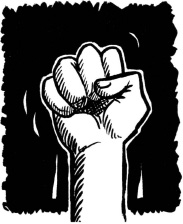
We are free to think whatever we want and to read or watch or listen to whatever we want. To see the words “thought control” in connection with a democratic society seems strange.
Like any good scientist, Chomsky takes nothing for granted. He questions everything.
To answer these questions, Chomsky goes back to the founding of the American republic. There are two fundamentally opposing views in America of what democracy is, and of what freedom of the press is.
One notion of the role of media in a democracy is typified by the view of Supreme Court Justice William Powell who wrote that democracy requires free access to information.


Within that definition of democracy citizens should “have the opportunity to inform themselves, to take part in inquiry and discussion and policy formation, and to advance their programs through political action.”
This view is the standard belief in America.
But, unfortunately- according to Chomsky- it is not the way it really works.
The alternative view of the purpose of the media was expressed nicely by James Mill: The media’s role is to “train the minds of the people to a virtuous attachment to their government.” (That is so sinister that it bears repeating.)
… to “train the minds of the people to a virtuous attachment to their government.”
(… and, adds Chomsky, “to the arrangements of the social, economic, and political order more generally.”[NI])

In this view, democracy is only for an elite—and the media’s job is to “train the minds of the people” to believe in the virtue of the elitist goons who rule them. This, says Chomsky, is more consistent with the ideas of the founding fathers as stated by John Jay who said that —those who own the country should run it.”
“John Jay’s maxim is, in fact, the principle on which the Republic was founded and maintained,” says Chomsky, “and in its very nature capitalist democracy cannot stray far from this pattern …. “ [NI]
Engineering consent
With this principle in operation, says Chomsky, politics becomes an interaction among groups of investors who compete for control of the state.

Walter Lippman
Journalist Walter Lippman wrote in Public Opinion in 1921 that “the manufacture of consent” constituted a “revolution in the practice of democracy” and has become “a self conscious art and regular organ of popular government.”
(“… manufactur[ing] … consent…”?)
“The common interests,” said Lippman, “largely elude public opinion entirely, and can be managed only by a specialized class whose personal interests reach beyond the locality.”
In The Encyclopedia of Social Sciences, Harold Laswell cautioned against believing “democratic dogmatisms about men being the best judges of their own interests.” The elite who designate themselves as rulers must be in a position to impose their will and if social conditions do not permit sufficient force to insure obedience, then “a whole new technique of control, largely through propaganda,” is necessary because of the “ignorance and superstition [of] the masses.”
Reinhold Neibuhr
Reinhold Niebuhr, whom Jimmy Carter cited as one of his main influences, was the source of the quote that Chomsky chose as his title. Because of the “stupidity of the average man,” he must be given “necessary illusions” and “emotionally potent oversimplifications” instead of the truth.


Historian Thomas Bailey, arguing to avoid demilitarization after World War II, said, “because the masses are notoriously short-sighted and generally cannot see danger until it is at their throats, our statesmen are forced to deceive them into an awareness of their own long-run interests. Deception of the people may in fact become increasingly necessary unless we are willing to give our leaders in Washington a freer hand.”
Recap of Chomsky’s view
DEMOCRACY _______________________

- Our leaders consider us too stupid to be the judges of our own best interests.
- They believe that Democracy is only for the elite—the rich and powerful.
- They believe that “those who own the country should run it.”
___________________ POLITICS

MEDIA ____________________

The Targets of Propaganda
According to Chomsky the two targets of propaganda are:
1. The political class, which is roughly the 20 percent of the population that is educated, articulate, and is expected to play some role in decision making. Essentially, they function as social managers, so this group must be deeply indoctrinated. Their consent is important.
2. The other 80 percent is expected to take orders-to go along without thinking. And they are the ones who usually pay.
Though it has been clearly stated in public forums that it may be necessary to fool the public, it does not mean that the practitioners of the deception are always conscious of their deception:

In the third world, the US often resorts to violence to “restore democracy,” which in reality usually means whichever regime—no matter how brutal—most benefits US investors. In the US itself, a tradition of human rights still stands in the way of a free exercise of governmental force, so subtler techniques are employed: the manufacture of consent, manipulating public opinion with necessary illusions, covert operations that congress and the media ignore until they overflow into public awareness too far to avoid comment. Then they are treated as scandals, isolated incidents. A great deal of attention is paid to a public drama involving chosen fall guys, who may be pardoned after massively expensive public procedures, or may do some token prison time before coming out and retiring comfortably on pensions or hush money. Or perhaps, as in the cases of Oliver North and G. Gordon Liddy, they may parlay their notoriety into new careers as politicians or media figures.


One “scandal” after another emerges and then passes out of public attention until the next incident. Each of these incidents is portrayed as an aberration, a misadventure that departs from the norm of high integrity and dedication to constitutional principles of the majority of our public officials. But many of us suspect that the “scandals” are really business as usual, the true operations of government occasionally poking through the blanket of necessary illusions.
The public wearies of it all, their senses battered with so much meaningless input. They may sense that it is bogus, but they feel they have no power to do anything about it.
The Threat of Democracy
In 1975 the Trilateral Commission published a study entitled “The Crisis of Democracy,” on “the governability of democracies.” The paper interpreted public participation in decision-making as a threat, which it is to the elite governing class. The media, it says, are a “notable new source of power,” that has contributed to “an excess of democracy” and a resulting “reduction in governmental authority.” If journalists don’t impose “standards of professionalism,” says the study, “the alternative could well be regulation by the government.”


The media is a “guided market system”—guided by profit. And guided by the government. Which often amounts to the same thing. Information that is “guided” to suit an agenda—political or financial—is propaganda.
Propaganda is not the media’s only function, but it is a large part of it. And—to state the obvious—nothing will appear within the media system that contradicts the purposes of the owners.
Or, to put it another way: Ownership determines content.
How do the owners of our media control its content while managing to remain, for all intents and purposes, invisible?

“Never mind what’s going on behind that curtain …”
The Propaganda Model
In Manufacturing Consent, Chomsky and co-author Edward S. Herman sketch out what they call a “propaganda model,” describing the “invisible” forces that insure that the mass media will play the role of propagandists, transmit biased information instead of news, and do their masters’ bidding without even being asked. The media, say Chomsky and Herman, merely “mobilize support for the special interests that dominate the state and private activity, and … their choices, emphases, and omissions can often be understood best … by analyzing them in such terms.”[MC]


The heart of Chomsky’s and Herman’s propaganda model consists of what they call “news filters”-five of them. These filters, one level at a time, remove all “undesirable elements” from ever finding their way into your living room … or your mind.
(When the Soviet system collapsed, so did Filter 5; see explanation below for our attempts to find a new Evil Empire.)
FILTER 1. ONLY THE WEALTHY NEED APPLY
In the early 19th Century, a free press took root in England that represented the interests and identity of working people in a way that had been unknown before, but by mid-century the small papers had pretty much died out and were replaced by much larger entities.

And every year the media is concentrated in fewer and fewer hands.

Q: HOW MANY MEDIA SYSTEMS/COMPANIES EXIST?
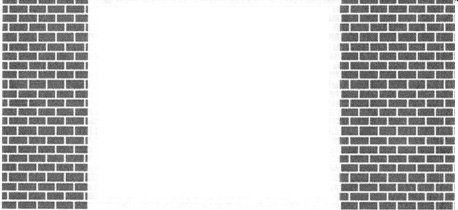
According to The Media Monopoly, written by Ben Bagdikian in 1982, there were approximately 1,500 daily newspapers, 11,000 magazines, 9,000 radio stations, 1,500 TV stations, 2,400 book publishers and seven major movie studios in the United States, over 25,000 media organs in all. Many of these are small, with very limited coverage and receive all but their local news coverage from larger media and wire services.
The 29 largest media systems account for over half of the output of newspapers, and most of the magazines, radio, books, and movies. Bagdikian calls this elite group “a new Private Ministry of Information and Culture that can set national agenda.”
Ownership is growing increasingly concentrated: In 1982, Bagdikian said 50 corporations controlled most of the major media outlets in the US. By the fourth edition of the book in 1993, the number was down to 20 and still dropping.
Q: WHAT IS THE “MEDIA OF INFLUENCE?”
The “Media of Influence” refers to highest tier of the media in terms of prestige, resources and coverage. It is made up of about 10-24 companies who, along with government wire services, define the national news agenda as well as providing the news itself for most of the lower level media companies.

The top tier (in 1986) included:
The three television networks:
 |
|
The leading newspaper empires:
 |
|
Major news and general-interest magazines:
 |
|
A major book publisher:
 |
|
Major cable TV systems:
 |
|
These 24 companies are owned by even larger corporations. Their main purpose is to maximize profits. They are owned by very wealthy people. All but one of the top companies have assets in excess of $1 billion.

Centralization of ownership of the top tier of media increased substantially after World War II, with the rise of television and its national networking. Before TV, news markets were local, though they depended on the top tiers for national and international news. Television is now the main source of news for the public.
But with the rise of cable TV, the market has fragmented somewhat, creating a trend toward decentralization. New electronic media, from on-line services to faxes and modems, may continue the trend toward decentralization, but the monopolists are hard at work finding ways to tie up the new media as they develop.
As we approach the end of the 20th Century, money still rules the media.
FILTER 2. ADVERTISING, THE LICENSE TO DO BUSINESS

Before the rise of advertising, the price of a newspaper had to cover its cost of production. But with advertisers to pay the bills, a publication could be marketed at less than the cost to make it. This put papers that do not sell advertising out of the market.

Q: HOW / WHY DOES THAT DISTORT THE NEWS?
When the British social-democratic paper The Daily Herald went out of business in the 1960s, it actually had almost double the readership of The Times, the Financial Times and the Guardian combined. Its readers, according to surveys, were more loyal to it and read more of it than readers of the other papers. What it lacked was advertising. Some analysts believe the death of the Herald contributed to the diminishing fortunes of the Labor Party because there was no longer an alternative frame of reference by which to analyze events.
American broadcast media programming, as well as print media, is bought and sold by the advertisers. And they are not shy about controlling it.

Example:
Gulf and Western pulled its funding from public TV station WNET in 1985 when it ran a documentary called “Hungry For Profit,” which criticized the activities of multinational corporations in the third world. A source at WNET said they anticipated a negative reaction to the program, and “did all we could to get the program sanitized.” Apparently, they didn’t “sanitize” it enough: Gulf and Western’s CEO complained to the station that the program was “virulently anti-business if not anti-American,” and said that WNET’s behavior was not that of “a friend.” According to the London Economist, “Most people believe that WNET would not make the same mistake again.” (One of the great “filters” in corporations of every kind is, either you learn to read your boss’s mind or you’re out of a job.)

Programs that raise concerns over environmental or human rights issues that are consequences of the corporate system are not likely to be well-received at any network, even on public TV.
Television networks know what will sell to their advertisers and what won’t. You don’t have to be a rocket scientist to figure out that programs that create doubt over the way big business operates probably won’t sell to your large corporate sponsors. Sponsors also object to programming that discusses disturbing and complex issues that may disrupt the “buying mood.” TV audiences are not thought of as “citizens” but as “consumers.” Sponsors want “entertainment” that will offend the fewest possible and create no disturbance.


The primary purpose of the media from the standpoint of those who own it is to sell—and at the same time to protect their interests.
FILTER 3. WHERE THE NEWS COMES FROM. RELIANCE ON INFORMATION PROVIDED BY GOVERNMENT, BUSINESS. AND “EXPERTS.”

In order to fill daily quotas for news material, the institutions of news media need steady reliable sources of news information. Reporters cannot be everywhere at once waiting for news stories to break so they concentrate their activities in places where news is breaking every day routinely, places like the White House, the Pentagon, the halls of Congress. Big business leaders are also credible sources for news stories. Information from these sources does not have to be checked or backed up, it is deemed credible by virtue of who it comes from.

This saves a lot of time, costly research and fact-checking. The news bureaucracies have an affinity with governmental and business bureaucracies and rely on them to satisfy their needs for a steady flow of news at low cost.
Many government agencies are terrifyingly helpful when it comes to supplying us with news: The Pentagon has a public information operation that employs thousands of people and spends hundreds of millions of dollars a year.
It is much larger than all the dissenting information sources put together.


Similar forces are in operation on local levels, with city hall and the police department as regular reporter beats.
Government bureaucracies cater to the needs of news organizations, creating symbiotic relationships by making the work of gathering news easier, less expensive, government-sanctioned, and corporate-blessed.
Who cares if it’s been “sanitized” to get through all those filters?
Besides, if you doubt the “official government version” of the news, you can always consult the experts. Of course, experts can be co-opted by big corporate or government interests, by funding them, sponsoring them, putting them on payrolls.

FILTER 4. FLAK
‘Flak’ is a cute insider’s word for negative reactions to media statements in the form of letters, phone calls, petitions, lawsuits, speeches, congressional bills, and other forms of punitive action. At a certain point, flak can make it very difficult for an organ of media to function. The capacity to generate flak that is truly threatening is proportional to power. The powerful can generate flak directly, such as letters or phone calls from the White House to anchormen or producers, demands from the FCC to produce documents related to a specific program, or threats from ad agencies or big sponsors to pull advertising or to sue. The powerful can create flak indirectly by complaining against the media to its employees and stockholders, generating advertising or press that denigrates the media, funding right wing monitoring or think tank operations that attack the media, or funding political campaigns of candidates who support their policies and will take a hard line toward media deviation.

The Media Institute sponsors media monitoring projects, conferences, and studies of the media which focus primarily on the failure of the media to accurately portray business and to give sufficient weight to the business point of view. It underwrites such works as John Corry’s expose of alleged left-wing bias of the media. The chairman of the board in 1985 was Steven V. Seekins, the top public relations official of the American Medical Association. The chairman of National Advisory Council was Herbert Schmertz of the Mobil Oil Corporation. The Center for Media and Public Affairs was created in the mid-‘80s as a “nonprofit, non partisan” research institute and was praised by Patrick Buchanan, Faith Whittlesey and President Reagan. The Center’s journal The Media Monitor keeps an eye on the alleged liberal and anti-business bias of the media. (One of the great ironies of the media is that despite the fact that these pro-business, pro-government, pro-status-quo “filters” give the media a frighteningly right-wing bias, it is constantly accused of left-wingery.)

FILTER 5. ANTI COMMUNISM
In 1988, the Soviet Union fell, forcing a rewrite of America’s national obsession with anti communism as the central noble cause, the one unquestioned value in our culture other than making money.


Though the United States was founded on revolution, in our time the word revolution has become identified with an evil menace. The revolutions of Russia, China, and Cuba were extremely threatening to the ruling elites because communism would undermine their superior class status. It became the malevolent presence by which everything was justified. Communism gave the population an enemy against which to mobilize. Richard Nixon’s first two political offices, as congressman and senator were gained by defeating incumbents who were taken by surprise and unable to defend themselves against his false accusations that they were communists. Though the charges were never substantiated, the fear and doubt created by Nixon’s smear campaigns lasted long enough to get him into office. Eventually that tactic ran dry, but anti-communism remained the center of American political ideology until the fall of the Soviet Union.
Concision: How “sound bites” are used to kill opposing viewpoints
After the fall of the Soviet Union there was some confusion from the propaganda experts on what enemy would be worthy of taking the place of the Evil Empire. Saddam Hussein served the purpose briefly, but a more reliable and malleable image has been that of Islamic fundamentalists, Muslims or Middle Easterners in general, who are portrayed as rabid extremists and terrorists as a general cultural trait.

CONCISION — THE STATE OR QUALITY OF BEING CONCISE.

“Concision” is the name news media professionals give to the principle of cutting everything to a bare minimum in order to make it fit within the format of “news.”
The idea that all news has to fit into this kind of format is an unquestioned assumption. The format was established in the early days of American television. It is structured around “commercial breaks” every few minutes as required by “our sponsors” who pay for the programming.
Keeping the herd in line
Through the principle of concision, it is assured that only conventional ideas will pass through the media filter, because ideas that everyone knows by heart require no support. When you say the Soviet Union invaded Afghanistan, no one will challenge you. But if you say that the US invaded Vietnam, you will be required to justify it. Most Americans have never considered the US action in Vietnam an invasion. Yet, according to Chomsky, it was an invasion in precisely the same way that the invasion of Afghanistan was an invasion. But this runs counter to the premises that dominate the American news media. It is not part of the American news media. It is not part of the American vocabulary.

KEEPING IN LINE
Within the media system, the herd instinct assures that the proper point of view is maintained. Reporters do not have to consciously distort the news. If they adopt the “correct” world view, they will write as they are supposed to write.

Whoever writes for a newspaper must write in the editorial voice of that paper. Whatever deviates too far will be cut out. Whoever ignores the rules will not long be a part of the institution. And make no mistake—there are rules. And they’re more strictly enforced than most drug or traffic laws. The proof is in the publication.
DON’T TAKE CHOMSKY’S WORD FOR IT—CHECK IT OUT FOR YOURSELF
A wonderful example of Chomsky’s unique combination of scientific objectivity and common sense simplicity is the way he gauges the importance (to the media) of one story compared to another. It’s so simple it’s brilliant: He actually measures the amount of column space devoted to coverage of different subjects as compared to the amount of coverage given to other similar subjects.

You can apply that method in a variety of ways:
Which story does this newspaper/magazine consider most important? (…and is there a pattern on which kind of stories they focus on and those they underplay?)
How does newspaper “A” compare to newspaper ”B” “C” “D” …? (One way you learn which newspapers and periodicals to “trust” is to see if they spend the most column space on the subjects you consider most important.)

The technique works as well with TV news-you just measure minutes of broadcast time devoted to each subject. Try it; it’s a real eye-opener to see what a TV network’ “values” really are; and to see (for example) the enormous difference in emphasis between a TV network largely owned by a corporation that manufactures weapons, compared to one that’ affiliated with a food-and-tobacco conglomerate (or to one whose CEO is famous for donating enormous sums of money to Israel). The “news” is very personal and can be “adjusted” to fit the needs of whoever owns it.
Those who wish to remain employed, to maintain the prestige of working for an important paper, to keep their employment resumes blemish-free will tow the line.


We began this section on Media with an awakening, a realization, a truth … The media’s function is NOT to inform the public, it is to SELL to the public. That truth led to a question … But what is it is trying to sell us’? As we have seen, our media has done a fine job of selling us the notion that we the people run our own country, that we are, in some meaningful sense, a democracy.
To that end, it has sold us a few perfectly ridiculous fantasies:

FANTASY 1: Our country is not owned, run, and controlled by a handful of rich people.
FANTASY 2: Our media are not owned, run, and controlled by a handful of rich people.
FANTASY 3 (the most dangerous of all) : Our opinions are freely formed, not coerced, conned, or manufactured in accordance with the designs of a handful of rich people.
But there is something we have left out. There is another thing that our media works hard to sell us: a fake history that leaves out the major players and bears little resemblance to reality. As usual, Chomsky doesn’t beat around the bush:

What is that history that is so ugly that it must be concealed by fables?
What are those policies that we would not support if we were aware of?
What exactly are those policies that our government so carefully hides?
